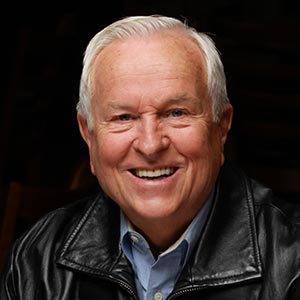My name is Matthew. I’m a speaker and author with Josh McDowell Ministry. After you watch this video, feel free to leave a comment here or via my social channels, listed below. I’d love to hear from you and be a small part of your wrestling with these important questions about Jesus. I also invite you to subscribe to my channel!
Gospels Historically Confirmed? | Are the Gospels Reliable?
We are on video 9 in my series on the historical reliability of the Gospels. In this video, let’s ask how the Gospels compare with other, outside information. Do the gospels mention people, places, and events that can be confirmed by known history?
Quite a lot of research has been done comparing the Gospels to other known history. For example, the first three chapters of Luke mention 11 historical leaders whose names are confirmed by sources outside the Gospels. This shouldn’t surprise us, given Luke’s track record of providing accurate details. Historian Colin Hemer has chronicled 84 confirmed details in the last 16 chapters of Acts, also written by Luke. As Matthew and Mark contain many of the same details found in Luke, we can say, by comparison, that they, too, are historically accurate.
New Testament scholar Craig Blomberg did a similar test on the book of John to see how it aligns with known history. Some confirmed details include the use of stone water jars, the location of Jacob’s well, the hostility between Jews and Samaritans, the topography of Western Galilee, the location and description of the five colonnades at the pool of Bethesda, the location of the pool of Siloam, the distance from Bethany to Jerusalem, first-century burial practices, Caiaphas as the high priest, and many others. Scholars Norman Geisler and Frank Turek found at least 30 people mentioned in the New Testament who are confirmed by archeology or ancient writings. Their search was not exhaustive.
Some critics suggest that Pilate and Herod, two Roman leaders, are proof that the Gospel details aren’t correct.
Pilate, they say, as portrayed in the Gospels, seems to be somewhat of a pushover when the Jews pressured him to crucify Jesus. Critics point out that Pilate wasn’t particularly interested in pleasing the Jewish leadership. But the Gospels provide a good explanation for why Pilate would have been hesitant with Jesus: He found no crime deserving of punishment. We have to remember that the cross was reserved for the worst kinds of criminals. Pilate eventually gave way to the agitated crowd’s demands, worried that the Jesus situation would negatively impact his relationship with Caesar.
They also assert that the story of Herod’s massive slaughter of male children, as described in Matthew 2:16, never happened. Certainly an event of this size would be recorded in other historical sources, they say, but it’s not. The Zondervan Bible Background commentary provides this important insight: “Only 123 men returned to Bethlehem from the Babylonian deportation (Ezra 2:21), and it appears not to have grown beyond a small village of perhaps a thousand people at the birth of Jesus. Herod’s forces killed all the infant boys under the age of two years, which would calculate to between ten to thirty boys. Although this number of infant boys massacred would be a huge loss for the village of Bethlehem, it is not an incident that stands out significantly when seen in the light of other horrific events in Herod’s infamous career, and historians would have easily bypassed it.”
We must acknowledge that just because an event is not mentioned outside the Gospels, doesn’t mean it didn’t happen. Also consider this factor: at that time, information was primarily transferred through word of mouth. Even if people wanted to write something down, many of them were illiterate or lacked the appropriate materials. And those materials would likely have disintegrated after a few hundred years, unless the information was continually recopied onto new materials. The only reason we have any ancient historical writings today is because copies were intentionally made to preserve them.
All in all, we have plenty to show that the Gospels corroborate well with other known historical details recorded by reliable sources outside the Gospels.
In our next (and final) video, let’s look at a very important question: What did the enemies of Christianity have to say about the Gospels? Do they admit some details were true? Do they sidestep the problems? If the Gospels contain any historical inaccuracies, you would expect the enemies of Christianity to be all over it. See you then!
ENGAGE WITH MATTHEW
Josh McDowell Ministry:
Matthew’s Josh McDowell Ministry Speaker Page
Social Links:
Facebook
Twitter
YouTube
Instagram














